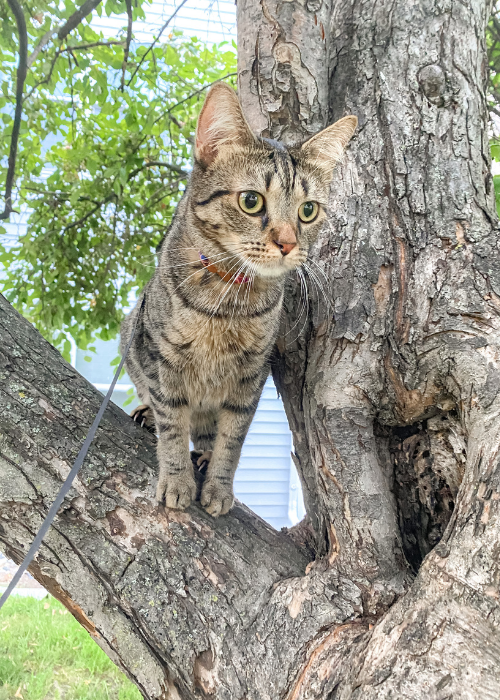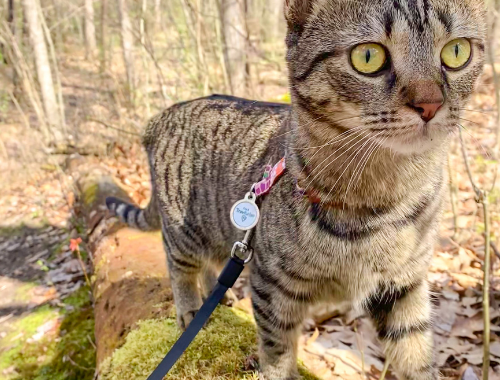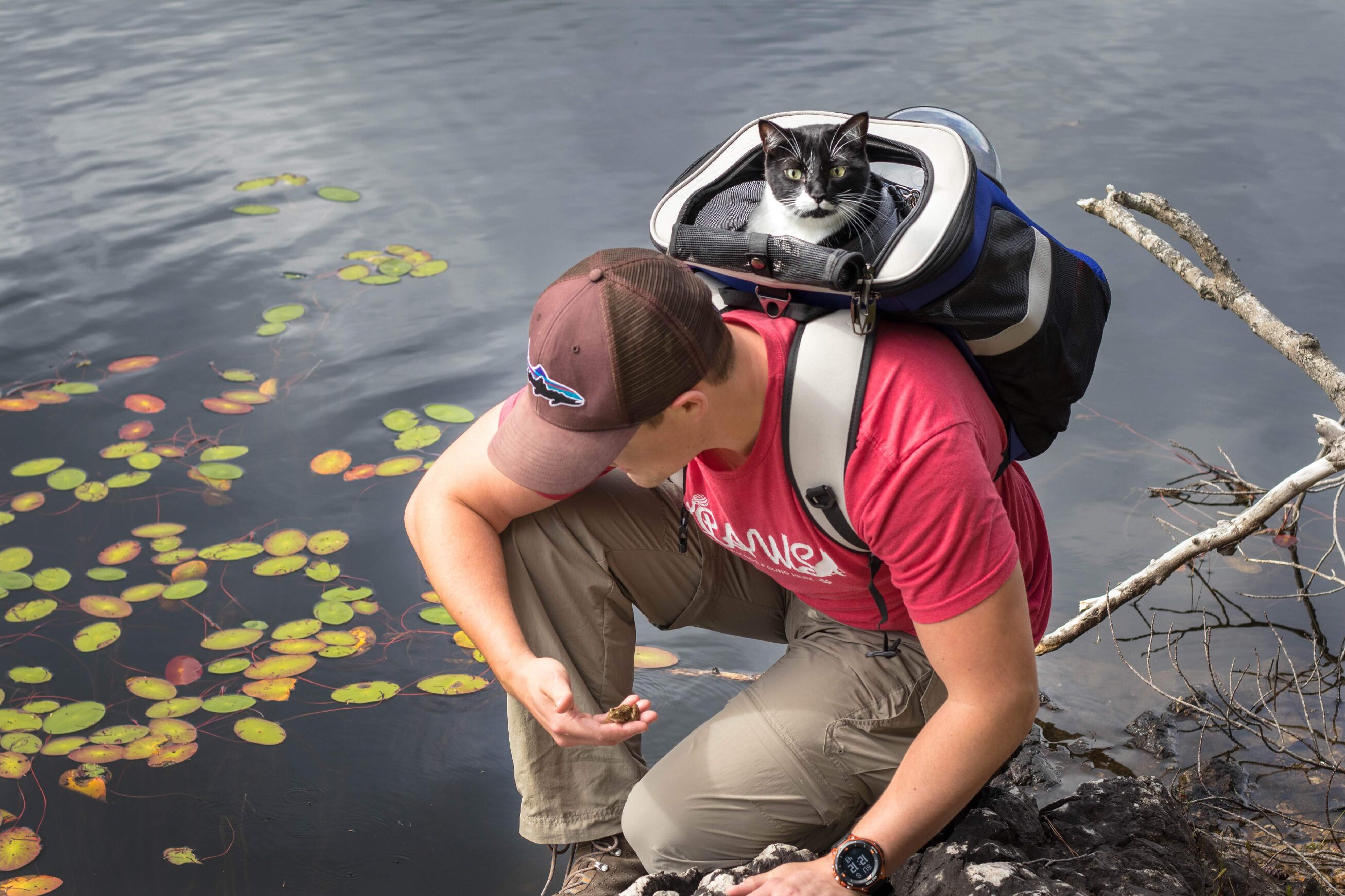
How To Read Your Cat’s Body Language
Cats can be very expressive and communicative with their owners. As cat owners, it is our job to try to understand what our cats are trying to tell us. You can do this by learning how to read your cat’s body language. This can take some time, patience, and trial and error. Some cats are much more expressive than others, and may be easier to understand. Others may only give subtle hints as to how they are feeling. Once you have had your cat for a while, you will start to learn some of their behaviors.
Why is it important?
With adventure cats, knowing how to read your cat’s body language is extremely important. They can tell you how comfortable they are in outdoor situations. If your cat is showing signs of fear, it may be time to head home. Sometimes, if your cat experiences extreme fear, you should aim to never put your cat in that situation again. If your cat showing fearful signs, but remaining relatively calm, it may be a situation you can train up to again slowly.
Another thing that is important with adventure cats is trust. Building trust is crucial to help strengthen that bond and communication you have with your cat. Read our post on building trust with your cat and our post on clicker training to help establish a communicative bond.
Ways cats communicate
Because all cats are individuals, they do not communicate the same way. Something one cat does to indicate fear, might not be what another cat does. There are also lots of other factors, such as environment, lighting, etc. that could change some of these things without your cat trying to communicate with you. Try to interpret your cat’s body language with the surrounding environment to see if you can get the full picture. This can take time and practice to learn, so do your best and try to make note of common things your cat does in certain situations.
Tails
Straight up in the air
This is often referred to as a “happy tail” in cats. It means your cat is happy and confident in their current surroundings.
Parallel
If the tal is more parallel with the ground, your cat is likely curious, but cautious. This could be when they are in a new situation. It could also be a sign of relaxation.
Tucked under their body
If it down completely or tucked under them, they are scared. Try your best to remove them from this situation. Either by placing them in their backpack, going to a different area, or just heading back home.
Flicking/Sweeping tail
If they are flicking their tail, they could be agitated and potentially become fearful or aggressive. However, this could also be an indication of hunting mode. Pay attention to your surroundings and what your cat is focuses on. If it is a dog, a group of people, bikers, etc., it is likely a fear response. If they are watching a bird or squirrel, they are likely enjoying themselves and “hunting”.
Ears
Forward and Alert
When their ears are forward and alert, this means that they are happy or focused on something.
Pulled back
This means that they are skeptical of something and are unsure what to think. They may or not become more frightened.
Pulled back and flat
If they are pulled back and are flat down on their heads, almost to the point to where you cannot see their ears, they are extremely frightened or very angry. Do your best to deescalate the situation.
Eyes
Eyes are super hard to tell because many environmental factors can affect the eyes and their surroundings should be taken into consideration.
Constricted pupils/slits
Typically, if your cat’s eyes are in little slits, they are focused and alert.
Dilated pupils
If their pupils are dilated, this can indicate stress and fear.
But, this can be skewed due to the light quality your cat is in. If they are in a low light setting, pupils will dilate to allow more light in. If they are in a brighter environment, their pupils will constrict to not allow light in. Going by your cat’s eyes is not always very accurate, so it is best to use a combination of the other methods to read your cat’s body language alongside this tip.
Vocalization
The hard part with this is that there are so many different ways your cat can vocalize. You need to learn your cat and how they vocalize in different situations. It can hard to tell what their meow means as well.
Hissing and growing
These are pretty clear signs that your cat is fearful, defensive, or unhappy. Be careful in these situations, as fight or flight mode can kick in, and your cat could redirect its fear or aggression onto you.
Chirping
Cats sometimes chirp or chatter at wildlife (or people), which is not a sign of fear. This can be a sign of hunting mode, curiosity, or contentment.
Meowing
This one is the most tricky. It all depends on the type of meow, which can be difficult to interpret. The more you take your cat outside and the longer you have your cat, the easier it will be to tell these apart. The different types of meows could be happy, fearful/scared, or aggressive. You can try to listen for a general “tone” in the meow. Just like with people, you can say something and have it be a compliment in one tone, but an insult if you say it with a different tone. Again, this takes practice to get a grasp on, but try to interpret the tone of the meow with the other body language signs they are exhibiting, as well at the environment around you, to get a full picture of what they are feeling.
Urinating
If your cat loses bladder control and urinates on themselves, they are extremely fearful or stressed. It is super important to try to remove your cat from the situation they are in.
Raised Hair
Raised hair or “Halloween Cat” posture is a sign your cat is trying to make themselves bigger. The reason they do this is so that they look bigger to their threat. Cats do this when they feel defensive and/or scared. It could be as innocent as a life blowing past them that makes them quickly react like this, so it is not always a sign to end the adventure.
Belly Exposed
If your cat is rolling around or laying on their backs, exposing their stomachs, they are very comfortable. Their stomachs are a vulnerable area so if they are willingly exposing that, they feel safe and content in that environment.
Kneading (making biscuits)
Kneading usually means that they are relaxed and are content. This is something they probably mostly do indoors, but may sometimes do in the grass outside.
Rubbing against you
There are scent glands all over a cat’s body, including their cheeks and head. When they rub their head on you, they are marking you with their scent. Similar to how a dog pees on objects to mark its territory. A cat head butts objects (or people). You may see them doing this on objects around the house as well.
Butt Wiggle
After this cute little action of butt wiggling is typically a pounce. This means that they are trying to hunt or play.
Conclusion
We can give you all the basics to help you read your cat’s body language, but at the end of the day, it all comes down to the big picture. What is going on in the surrounding environment, what is the rest of their body language telling you, what is their tone of meow, how else are they responding, and more. There is no one size fits all for cats and how they choose to communicate. It is up to you to interpret things to the best of your ability and make a judgement call on what you believe is best for your cat at that time. You know your cat best, and as long as your cat trusts you and you can keep them safe, then you are doing what you can for them!

Meet Otje And Pluk
You May Also Like

What To Do After Hiking With Your Cat
April 23, 2021
Meet Ruger
November 6, 2020

